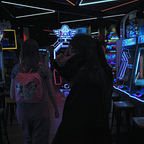Religion and its hold on contemporary pop-culture and art: David LaChapelle
Art, by its very nature, remains to be a nuanced and subjective experience for each individual audience member, thus, as society progresses, notions of what qualifies an artwork as ‘valuable’ continue to come into question. Known for his eccentric album covers and commentary on celebrity and pop-culture, David LaChapelle, utilizes his artwork as a vessel to push boundaries regarding traditional and contemporary perceptions of artwork and the binaries in which audiences use to regard it as ‘valuable’.
Post-modern artists such as David LaChapelle often utilize art history and religious imagery to create pieces that challenge the audience’s views of religion, forcing them to view it through a modern lens.
LaChapelle utilizes vibrant imagery to explore pop-culture, religion and art history through a surrealist lens. LaChapelle’s pieces are often humorous or provocative, exploring ideas such as religion through contemporary or bizarre imagery.
This is especially prevalent throughout his piece ‘Last Supper’ (from the series Jesus is my Homeboy), 2003. Reinterpreting ‘The Last Supper’ by Leonardo da Vinci into a contemporary landscape. Through this piece, he refocuses the lens from a traditional piece, such as ‘The Last Supper’, renowned amongst millions, towards more pressing, contemporary societal issues as seen through the urban landscape illustrated within the piece. He is modernizing the life of Jesus, reimagining iconic religious imagery into the landscape of a contemporary living room, sitting amongst a table of friends.
The other figures within the image seem to be questioning the presence of Jesus, all in intimidating stances, attempting to speak to him whilst he remains unbothered, a halo of light emitting from a cross engulfing the behind of him.
The general composition of the piece is the most striking resemblance it has to the original, however, many smaller aspects of the piece have been adapted to suit the contemporary setting. In particular, rather than the abundant bread seen in the original, they have been replaced by modern branded alcohol, fruit, cheese and crackers.
This piece, due to its subject matter and the interpretation of it, could be difficult for religious audiences to view, due to the irony and humor used to appropriate what is viewed as such a significant religious piece, in turn, challenging the audience’s perceptions of religion and how we, as a society interpret it through history.
David LaChapelle appropriates the work of Leonardo DaVinci to create a piece that reframes how we view religious imagery through the lens of a contemporary viewer, challenging how we perceive concepts such as religion and faith in our urban day and age.
